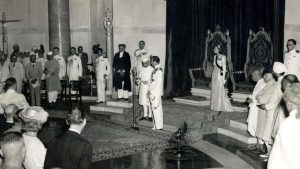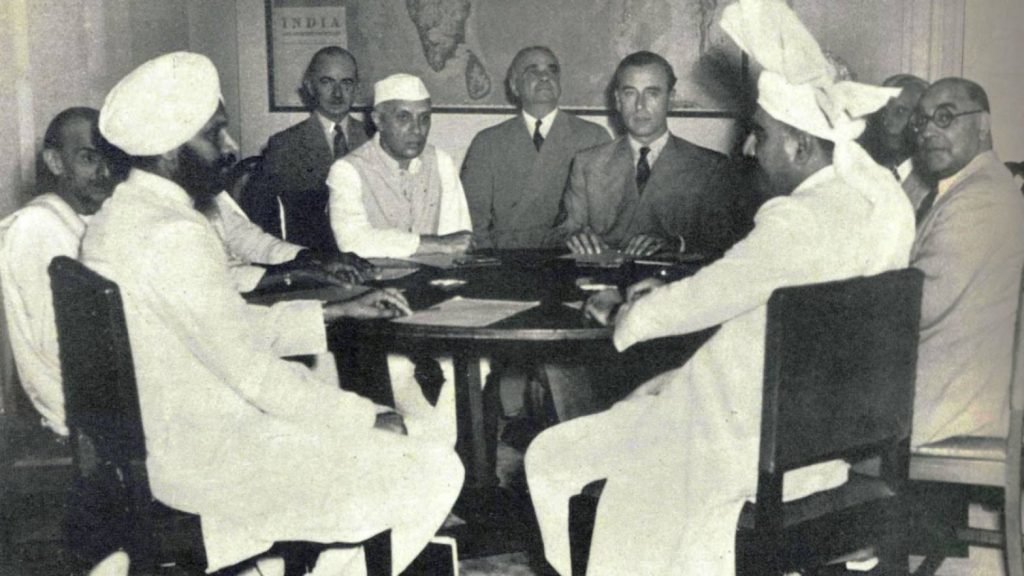

New Delhi, India – On August 15, 1947, India celebrated its first Independence Day as a free and sovereign nation, marking a pivotal moment in the country’s history and the culmination of a decades-long struggle for freedom from British colonial rule. The celebrations, filled with joy, pride, and a sense of newfound liberty, were witnessed across the vast subcontinent, with the national capital, New Delhi, serving as the epicenter of the historic occasion.


The journey to this momentous day had been a long and arduous one. The Indian independence movement, characterized by non-violent resistance and civil disobedience, was led by iconic figures such as Mahatma Gandhi, Jawaharlal Nehru, and Sardar Vallabhbhai Patel, among others. Their relentless efforts, alongside the sacrifices of countless freedom fighters, ultimately led to the withdrawal of British rule after nearly two centuries of dominance.
The Indian Independence Act, passed by the British Parliament and enacted on July 18, 1947, marked the legislative turning point. It partitioned the Indian subcontinent into two separate countries: India and Pakistan, with Pakistan comprising predominantly Muslim regions. While the partition brought about communal tensions and mass migrations, the focus on this day was on unity and the promise of a brighter future.
The first Independence Day celebrations in India were a spectacle of patriotism, cultural heritage, and unity. In New Delhi, the official ceremonies commenced early in the morning at the historic Red Fort, a 17th-century Mughal monument that served as a powerful symbol of India’s rich historical legacy.
Jawaharlal Nehru, the first Prime Minister of India, hoisted the national flag atop the ramparts of the Red Fort, amidst a sea of onlookers. The tricolor of saffron, white, and green, with the Ashoka Chakra at its center, fluttered proudly in the breeze, a testament to the nation’s sovereignty. Nehru’s famous speech, “Tryst with Destiny,” delivered the previous night in the Constituent Assembly, still resonated in the hearts of the people, instilling a sense of hope and determination.
The flag-hoisting ceremony was followed by a grand parade featuring members of the Indian Armed Forces, who marched with precision and pride, showcasing their military prowess and discipline. The sound of marching boots and the rhythmic beats of the army bands filled the air, as spectators cheered and clapped along.
Cultural performances, reflecting the diverse traditions of the country, were a highlight of the celebrations. Colorful folk dances, vibrant costumes, and melodious songs from different regions of India captivated the audience, presenting a unified front of the country’s rich cultural tapestry.
In his address to the nation, Prime Minister Nehru emphasized the significance of this historic day and outlined his vision for the future of India. He spoke of the challenges ahead, the need for unity and harmony among diverse communities, and the importance of upholding democratic values and secularism.
Nehru’s words, delivered with passion and conviction, inspired a sense of national pride and a shared responsibility for building a strong and prosperous India. He reminded the people of the sacrifices made by freedom fighters and urged them to continue striving for social justice, equality, and the upliftment of the underprivileged.
The choice of the Red Fort as the venue for the Independence Day celebrations held deep symbolic significance. Built by Mughal Emperor Shah Jahan in the 17th century, the fort had served as the seat of power for the Mughal Empire, which ruled over most of the Indian subcontinent during its heyday.
By holding the ceremonies at the Red Fort, the Indian government asserted its sovereignty and sent a powerful message of continuity and cultural heritage. The fort, with its majestic architecture and historical importance, served as a reminder of India’s glorious past and the resilience of its people.
While the celebrations were marked by jubilant festivities, they were also tinged with a sense of solemnity. The partition of the country had resulted in mass migrations and communal violence, leading to the displacement of millions and the loss of countless lives.
In his speech, Nehru acknowledged the pain and suffering caused by the partition, expressing his hope for peace and harmony between the newly formed nations of India and Pakistan. He extended a hand of friendship to the neighboring country, emphasizing the shared history and cultural bonds that connected the two nations.
India’s independence was celebrated not just within its borders but also garnered international acclaim. Messages of congratulations poured in from world leaders, recognizing the significance of this moment in the global struggle for freedom and self-determination.
The United States, the Soviet Union, and many other nations extended their support and goodwill, marking the beginning of India’s emergence as a key player on the world stage. India’s commitment to democracy, secularism, and non-alignment in the Cold War era garnered respect and admiration worldwide.
The first Independence Day celebrations in India not only marked the birth of a nation but also set the tone for the country’s future trajectory. The ideals espoused by Nehru and other leaders during this historic occasion continue to guide the nation’s policies and aspirations.
In the decades that followed, India faced numerous challenges, including poverty, economic disparities, and social injustices. However, the spirit of freedom and resilience that characterized the independence movement remained a driving force, propelling the nation forward.
Today, as India celebrates its 75th Independence Day, the memories of that fateful day in 1947 remain etched in the collective consciousness. The journey has been fraught with obstacles, but the nation has persevered, emerging as the world’s largest democracy and a rising global power.
As the sun sets on another Independence Day, the tricolor continues to fly high, serving as a reminder of the sacrifices made, the struggles endured, and the enduring spirit of a nation that continues to strive for progress, unity, and a brighter future for all its citizens.
India’s first Independence Day celebrations in 1947 were not just a commemoration of freedom attained but also a declaration of hope and determination for the future. The legacy of that day continues to inspire and shape the nation, reminding its people of their collective strength and the enduring promise of a free and prosperous India.
As the words of the Indian national anthem, “Jana Gana Mana,” resonate across the country, the spirit of independence remains alive, guiding the nation toward a destiny of its own making.
The Indian Premier League (IPL) is one of the world's biggest cricket leagues, famous for…
There are a lot of websites on the internet that provide a range of services;…
For decades, city-building simulators have captivated the gaming community, but "SinpCity" represents the next frontiers…
Situated at the heart of West Bengal, Rampurhat is a town with a tropical climate…
Croton Plant Varieties are an excellent addition to both indoor and outdoor spaces due to…
From online commerce sites and content websites to SaaS products and streaming providers, companies across…